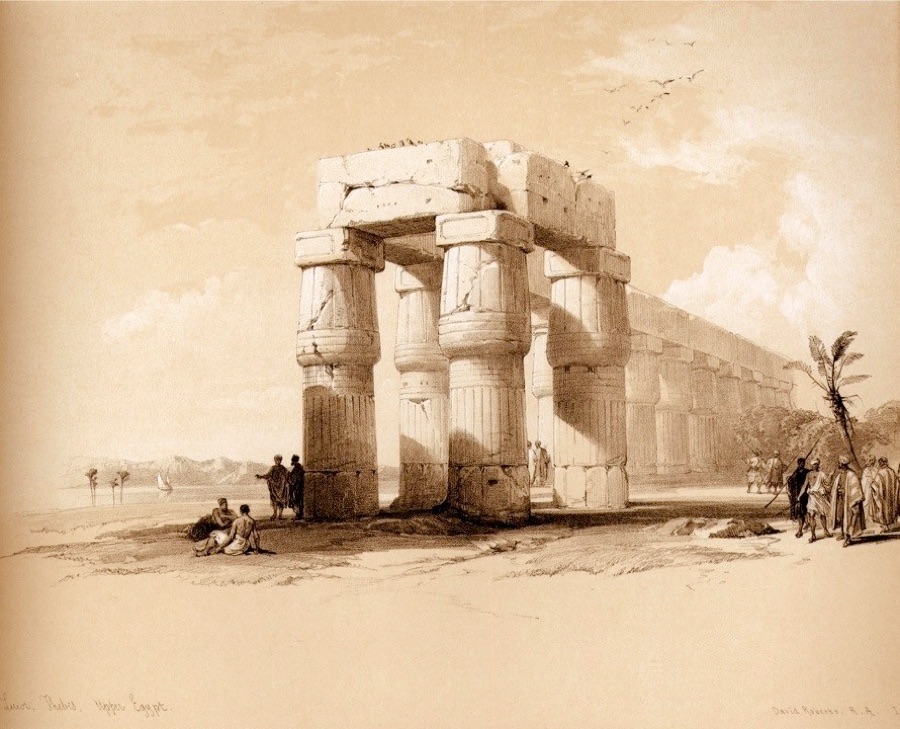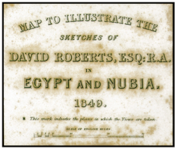AT LUXOR: THEBES.
THE beautiful subject of this Vignette, taken from that extremity of the Temple, which is the nearest to the Nile, is almost the only part of it which is free from the foul accompaniment of the mud habitations of the Fellahs, who have built their village in and around these magnificent ruins. “The Arab village of Luqsor,” says Wathen, ”has kennelled itself in the midst of the lordly halls of the Pharaohs, and vile mud huts contrast with the ‘cunning work’ of gigantic capitals.” Here the ground is so raised by the ruins of the Temple, or of former habitations, that not more than half the length of the shaft of the column is visible. “The capitals,” says Roberts, “are supposed to have had their forms suggested by the budding lotus;” but Wathen describes this sort of column of the Pharaonic architects as consisting “of a massive cylindrical shaft, modelled upon a primitive pillar, formed of a cluster of reeds, such as may have been in use in the earliest times. And this confirms the statement of Diodorus, that the first Egyptian buildings were constructed of reeds. In the early examples, as at the Temple of Luqsor, the reeds, or stems, are distinctly represented, bound together at successive heights; a ring or cincture appears to unite or secure them near the top, and the supposed bulging of the pliant reeds under the superincumbent architrave produces the singular contour of the capital; the whole is crowned with a square block or abacus.” Resting on these are the vast masses of stone which formed the entablature and often the ponderous roofs of these extraordinary structures. This portion of the south-western extremity of the Temple of Luxor is strikingly picturesque.
Roberts’s Journal Wathen’s Arts and Antiquities of Egypt.


